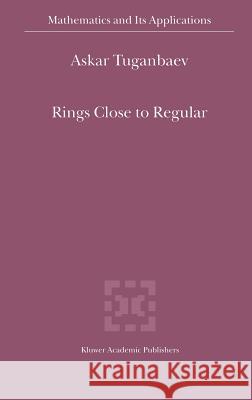Rings Close to Regular » książka
Rings Close to Regular
ISBN-13: 9781402008511 / Angielski / Twarda / 2002 / 350 str.
Preface All rings are assumed to be associative and (except for nilrings and some stipulated cases) to have nonzero identity elements. A ring A is said to be regular if for every element a E A, there exists an element b E A with a = aba. Regular rings are well studied. For example, 163] and 350] are devoted to regular rings. A ring A is said to be tr-regular if for every element a E A, there is an element n b E A such that an = anba for some positive integer n. A ring A is said to be strongly tr-regular if for every a E A, there is a positive integer n with n 1 n an E a + An Aa +1. It is proved in 128] that A is a strongly tr-regular ring if and only if for every element a E A, there is a positive integer m with m 1 am E a + A. Every strongly tr-regular ring is tr-regular 38]. If F is a division ring and M is a right vector F-space with infinite basis l' then End(MF) is a regular (and tr-regular) ring that is not strongly tr-regular. The factor ring of the ring of integers with respect to the ideal generated by the integer 4 is a strongly tr-regular ring that is not regular.











